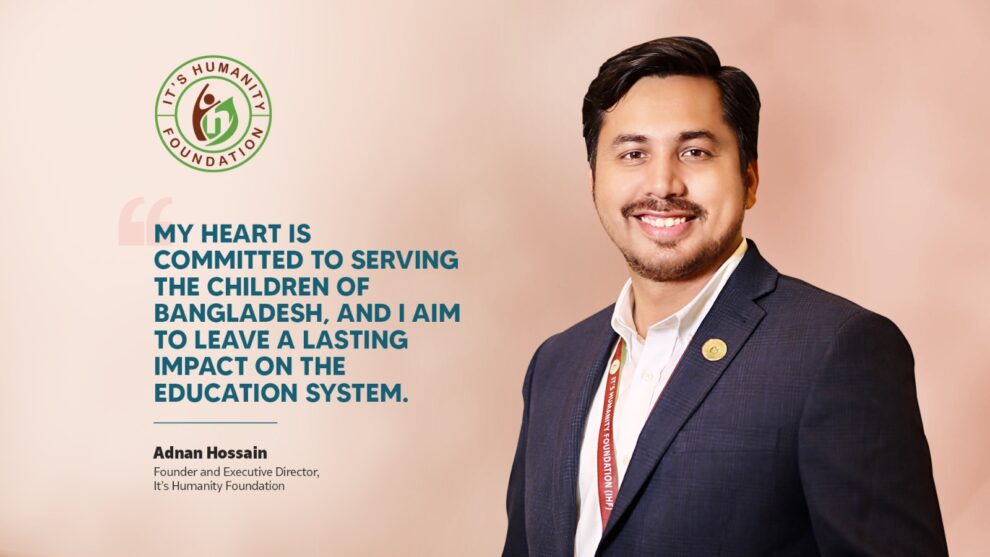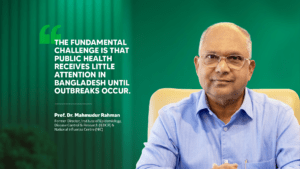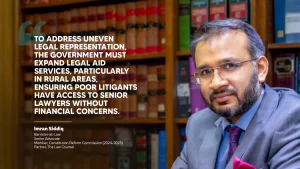1. Let us start with a glimpse into your early life, what inspired you to pursue humanitarian work, particularly in education, despite coming from a business-oriented family?
I never really envisioned a career in development. Growing up in a business family with a long history of philanthropy, I often assisted in various ways but never truly understood how one individual could transform someone else’s life or contribute to a better future for those less fortunate.
That perspective shifted when I began university. I watched a documentary by BRAC, which sparked a deep interest in humanitarian work, particularly in understanding the concept of humanity. It awakened in me a desire to do more—to take action and create change where it was needed most. I realized that while I couldn’t solve every problem, I could take the first step and inspire others to join me. I wanted to lead by example and leave behind a legacy that would encourage others to make a difference. It was at that moment that I understood this was the time to define my purpose in life.
In the winter of 2009, my family, as we did every year, donated blankets to those in need. However, this time, I decided to take charge of the initiative. I wanted to experience firsthand what it meant to plan and execute a charity drive. We traveled to numerous towns and villages, distributing blankets to those less fortunate. I found joy in meeting new people and hearing their stories, and the sense of fulfillment from helping others was overwhelming. But what struck me most was the harsh reality of their lives—something I hadn’t fully grasped despite living in Bangladesh.
It was heartbreaking to witness people struggling without access to education or basic life skills. Many were forced into desperate situations, resorting to stealing or selling what little they had just to survive another day. I realized that this wasn’t just a matter of poverty but a lack of opportunity. Education, to me, was the solution. It became clear that access to education and employment was key to changing lives. With knowledge and work opportunities, people could break free from the cycle of hardship.
From that moment, I made it my mission to focus on education and employment. I recognized that while jobs may be limited, our country is filled with untapped talent. There are opportunities waiting to be explored, and it’s possible to create meaningful change. My goal was not just to think about what needed to be done but to take action. I believe we shouldn’t stand by as spectators; instead, we should get involved, extend a helping hand, and move forward together.
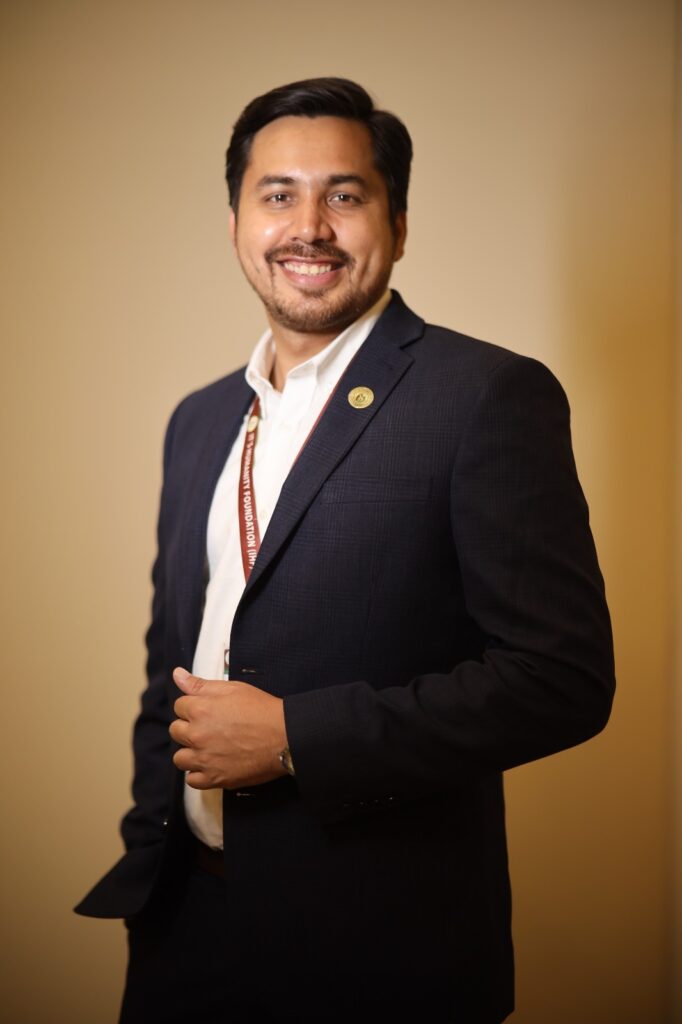
2. Could you elaborate on the core mission and vision of It’s Humanity Foundation and how it plans to eliminate poverty & create a secure future for marginalized children?
When I first started, my goal was simple—I just wanted to teach children. By the end of 2010, we had nearly 40 students, and the overwhelming support from parents and the community made me realize that this initiative was becoming something far bigger than I had anticipated. In January 2011, I decided to take things further and transform the informal setup into a proper school.
At that time, I was still studying in Dhaka, so I developed a consistent routine. Every Wednesday night, I would catch a bus to Saidpur, spend Thursday, Friday, and Saturday teaching the kids, and then return to Dhaka late Saturday night. I kept this schedule for six months. As the school continued to grow, I began thinking—if this model worked so well in my village, why couldn’t it work in other communities as well?
By 2012, I knew I had to expand. That’s when I decided to formalize this project into a proper organization and devote myself fully to its mission. What began as a simple desire to teach children has now evolved into something much more significant. Today, It’s Humanity Foundation not only focuses on education but also empowers mothers and helps families build sustainable futures.
Today, 14 years later, our mission has expanded. We now provide education, vocational training, healthcare, and various forms of support to help communities break the cycle of poverty and offer their children a brighter future. This journey has grown far beyond my vision, but at its core, the mission remains the same—helping children and families build better lives.
3. What are your thoughts on the current state of education and vocational training for marginalized communities in our country?
The current state of education in our country, particularly for marginalized communities, requires significant improvement. At our schools, we follow the NCTB curriculum, but the disparity between students from privileged backgrounds and those from marginalized communities is evident. Privileged students have access to resources and support systems that help them adapt to changes in the curriculum, while students from communities rely solely on what they learn in school. Whenever there is a change in the curriculum, it causes confusion, and these children struggle to keep up. Our teachers, who often come from similar backgrounds, also find it challenging to adjust to these changes.
At It’s Humanity Foundation, we provide education up to grade 8. However, many of our students can’t afford to wait that long to start working, as their families depend on them financially. Feeling the pressure to begin earning as soon as possible, they often leave school early. To address this, we launched the “Hatey Khori Project” for students after grade 8. This vocational training program, in partnership with the Trust Technical Training Institute (TTTI) of the Bangladesh Army, equips students with practical skills. After six months of training, they receive two certificates—one from the Bangladesh Technical Education Board—qualifying them as certified skilled workers. They also learn vital soft skills such as communication, negotiation, and presentation techniques.
Our approach to education is inclusive, aiming to reach children in all regions, no matter how remote. We have schools in rural and urban areas, as well as in isolated locations, such as a Char area where we run the only school for 130 children. We also work with tribal communities in Bandarban and Ukhiya, where there is no access to electricity. To further expand our reach, we launched the “Chakar School,” Bangladesh’s first mobile school operating from a bus. Additionally, we established Project Alok, a school for marginalized children with learning disabilities.
Our mission is to ensure that no child is left behind, whether they live in a remote village, on an isolated island, or have special needs. This commitment drives us to continually improve education for marginalized communities across the country.
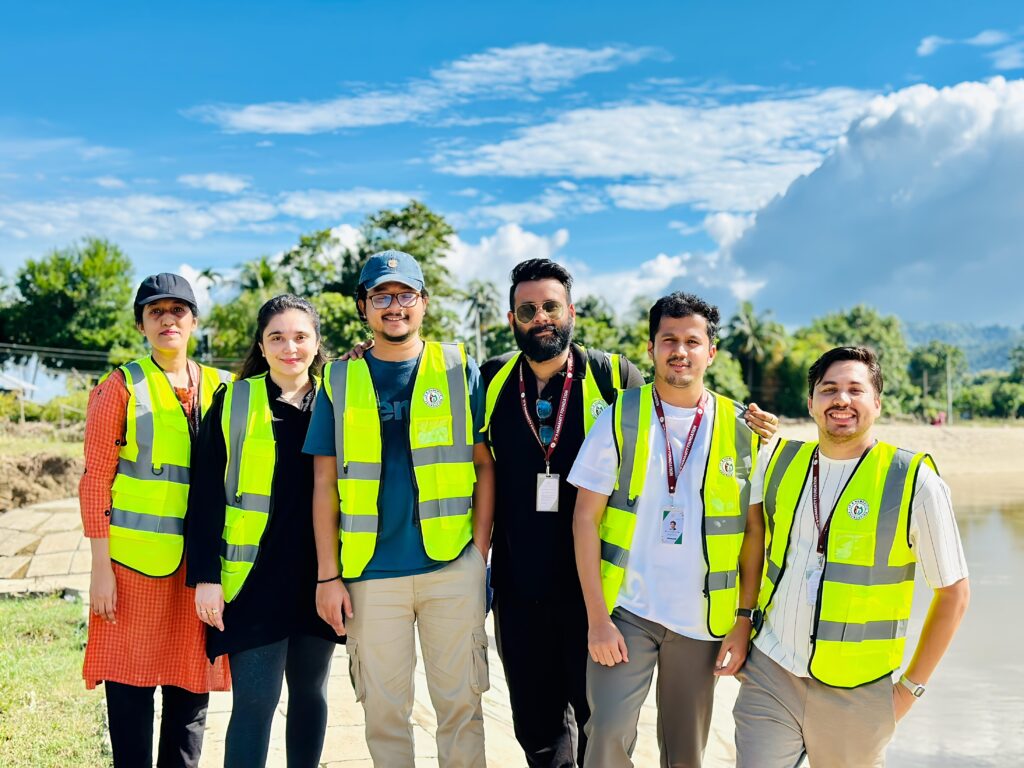
4. Are there any other major social issues that have caught your attention and do you plan to engage in activities to address these concerns through IHF?
One of the biggest challenges we face today is with our social behavior, yet it’s a topic that doesn’t receive nearly enough attention. This includes pressing issues like mental health and the impact of socio-economic factors. These problems are becoming increasingly severe, particularly among young people, and they’re raising significant ethical concerns within our communities.
Since the COVID-19 pandemic, so much has changed—our lifestyles, values, and even our career aspirations. Our social behavior has shifted as well, but we’re not discussing these changes as much as we should. People have become more self-focused, and this growing individualism is worsening social behavior problems. It’s crucial that we start addressing these changes and find ways to tackle them.
Recognizing the importance of mental health, we have introduced Non-Explanatory Leave (NEL) as a key initiative to safeguard the mental well-being of IHF employees. This policy gives our employees the option to take a day off whenever they need to, without having to provide a reason or offer lengthy explanations. Under the NEL policy, all regular full-time employees are entitled to one day of leave per month, ensuring they have a way to step back and recharge when needed.
5. Under its emergency response program, IHF has provided significant aid and support to over 47,000 beneficiaries in flood-affected areas, what has been the action plan and strategy of your organization to provide this crucial support?
When the floods struck areas that hadn’t seen such disasters in 30-40 years, we at It’s Humanity Foundation (IHF) recognized the urgent need for action. Rather than getting bogged down in extensive planning, we launched our relief efforts immediately, adapting our strategies daily based on the evolving circumstances while prioritizing both our safety and the needs of the affected communities. This swift response was crucial in ensuring that those in need received timely assistance.
Approximately a week into the disaster, I personally traveled to Cumilla, where I worked alongside the Bangladesh Army to reach remote areas by boat. We also empowered local volunteers, instilling in them the same sense of trust and responsibility that motivated me when I founded IHF. Thanks to partnerships with organizations like AISD, Ispahani, ACI, EO, and the Sri Lankan Embassy, along with contributions from many individual donors, we were able to make a significant impact.
To manage public donations effectively, we concentrated on three key areas: rescuing individuals and providing shelter, delivering food and essential supplies, and working on long-term rebuilding efforts. Initially, we faced resource limitations, which prompted us to collaborate with a few local organizations that were already operational on the ground. This partnership allowed us to navigate the early critical days while we organized fundraising efforts and recruited volunteers. Social media proved invaluable in rallying support quickly; however, we ensured that our trusted volunteers handled public donations responsibly.
As we entered the third stage of our relief efforts, we implemented a comprehensive action plan for our donation drive. Our objectives include providing food for one month to 1,000 individuals, building 500 houses, and reconstructing 100 schools damaged by the floods. To sustain support, we established transparent communication channels, targeted fundraising campaigns, and engaged local businesses for sponsorships. By mobilizing volunteers and collaborating with local media, we aimed to raise awareness and encourage public participation in our initiatives. Alhamdulillah, while we’ve made significant progress, we are committed to continuing our work until we restore hope and rebuild the lives of those affected by the floods.
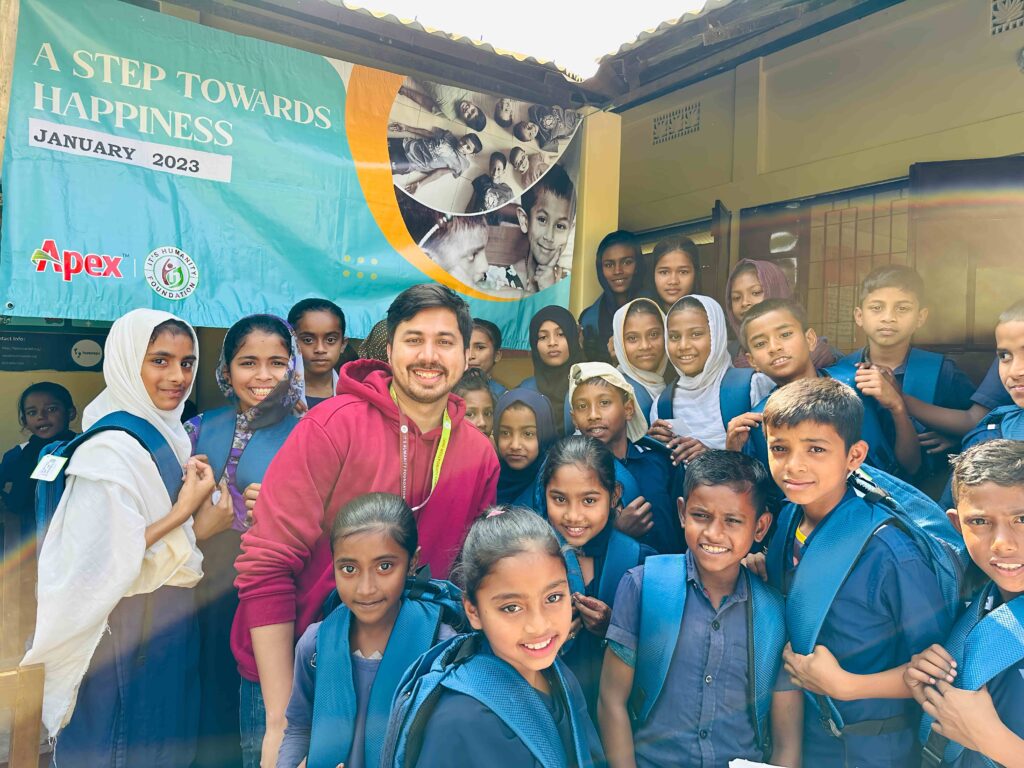
6. Having directly operated in the flood-affected regions, could you elaborate on the severity of the floods and their impact on those regions?
The floods were absolutely devastating, affecting millions of people. Around 5 million were displaced from their homes, and nearly 2 million lost everything they had. The hardest part was the rescue operation. It was really tough because it required special skills and training to do it properly. Many people were stuck in dangerous situations, and getting them to safety was a huge challenge. The impact on these regions was massive, and the recovery will take a long time.
7. Having taken a leadership role in providing support during this crisis could you highlight the major challenges you face when dispatching help to the victims?
Taking on a leadership role during the flood crisis presented numerous challenges. One of the most difficult aspects was determining how to effectively assign tasks to my team. I had to be mindful of each person’s strengths to ensure that everyone was utilized effectively. Fortunately, my incredible team of 20 at headquarters met the challenges headstrong. Each member stepped up and gave their all, transforming our efforts into a true team accomplishment. Despite this support, managing resources and ensuring everything ran smoothly proved to be a significant challenge.
On the ground, maintaining empathy was tough, as I encountered countless people in desperate need of assistance. This heightened the difficulty of distributing resources fairly and coordinating volunteers. To navigate this, I focused on staying organized, implementing proper planning, and ensuring we raised sufficient funds to sustain our operations.
A crucial strategy I employed was open communication, which helped to keep the team informed and engaged in our objectives. I also prioritized delegation, allowing team members to take ownership of specific tasks, which empowered them and increased our overall efficiency.
Another significant challenge was ensuring the safety and well-being of my team while working under such difficult conditions. During those days, I often found myself working 18-19 hours with very little sleep. However, looking back, I feel proud—Alhamdulillah, the hard work paid off, and we were able to make a meaningful difference in the lives of those affected by the floods.
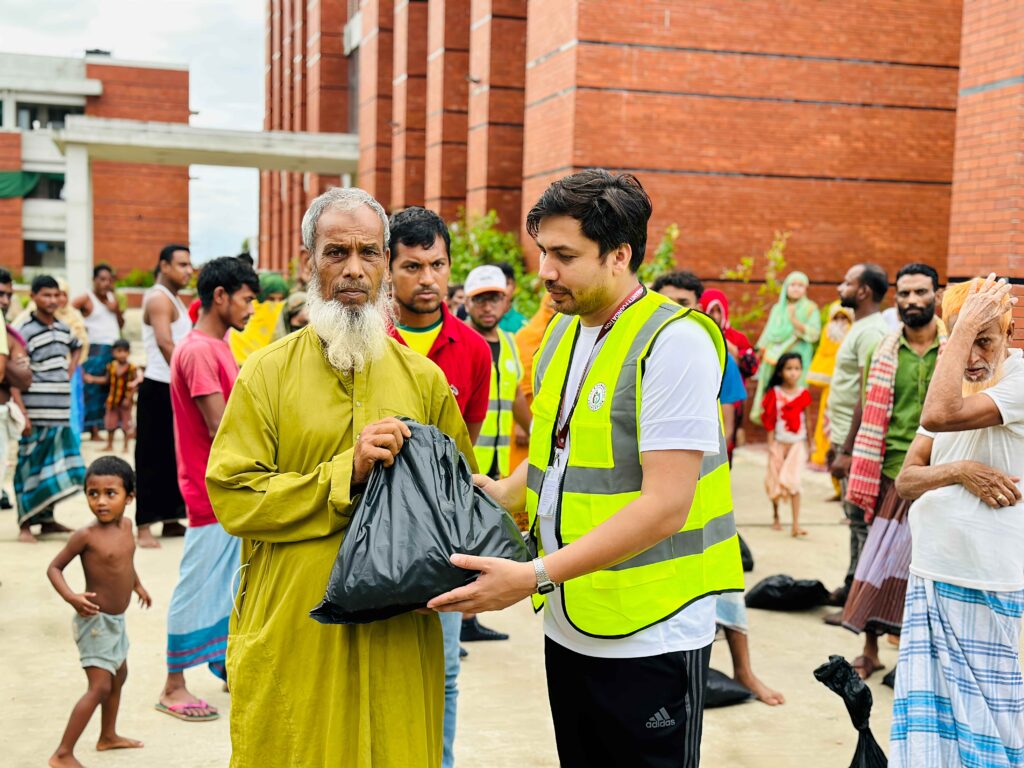
8. How has the local community reacted to IHF’s valiant efforts and are there any interactions or stories in particular that you remember fondly?
One of the most heartwarming aspects of our work is witnessing how people respond when we help them. I’ve had moments that truly touched my heart, such as when we hand someone a bag of food, and they hold our hands or touch our foreheads to offer blessings. These small gestures make everything feel worthwhile, often bringing tears to my eyes.
One unforgettable story took place during our flood relief efforts in Feni, Sikandarpur. We traveled to a very remote area, which required a long journey. We started by car, then spent two hours on a tractor, and finally took a boat. It was an extremely hot day, but we managed to deliver the much-needed relief supplies. On our way back, while waiting for the boat, we were completely exhausted and out of water.
Then, something unexpected happened. The family whose home we had just visited came out and offered us biscuits, despite their own struggles. Shortly after, they brought us a 5-liter bottle of water. As an hour passed, they insisted that we couldn’t leave without sharing a meal. This family, whose home had been underwater for two weeks, cooked a meal for all 12 of us—fish, eggs, rice, and vegetables. I was completely overwhelmed by their kindness.
Even in the midst of a crisis, when they had so little, they ensured we were well taken care of. Their generosity and humanity deeply moved me, and it’s a moment I will always remember. Alhamdulillah, it served as a powerful reminder of how kind people can be, even during the toughest times.
9. What advice would you give to those wishing to start humanitarian efforts to support the underprivileged population in Bangladesh?
The best advice I can offer for humanitarian work is to prioritize human connection. Often, when providing aid, we may overlook the significance of communication. Simply handing over a bag of food is not enough—taking the time to smile, engage, and have a brief conversation with the person you’re helping can make a world of difference. Being present, offering encouragement, and demonstrating empathy can provide a sense of comfort that goes beyond material aid.
Another crucial piece of advice is to conduct a thorough needs analysis and prioritize areas with the greatest need, particularly in remote locations. Humanitarian work is not about choosing what is convenient or easy for us; it’s about going where help is most urgently required and addressing immediate crises, even when it poses challenges.
I believe that humanitarian work is an incredibly fulfilling career path—it is rewarding, meaningful, and impactful. You don’t need to run your own NGO to make a difference. Countless organizations would benefit from your skills, advice, or resources. Humanitarian efforts can take many forms; it’s not solely about giving money or materials, but also about offering your time and expertise. You just need to find the best way to contribute to the community.
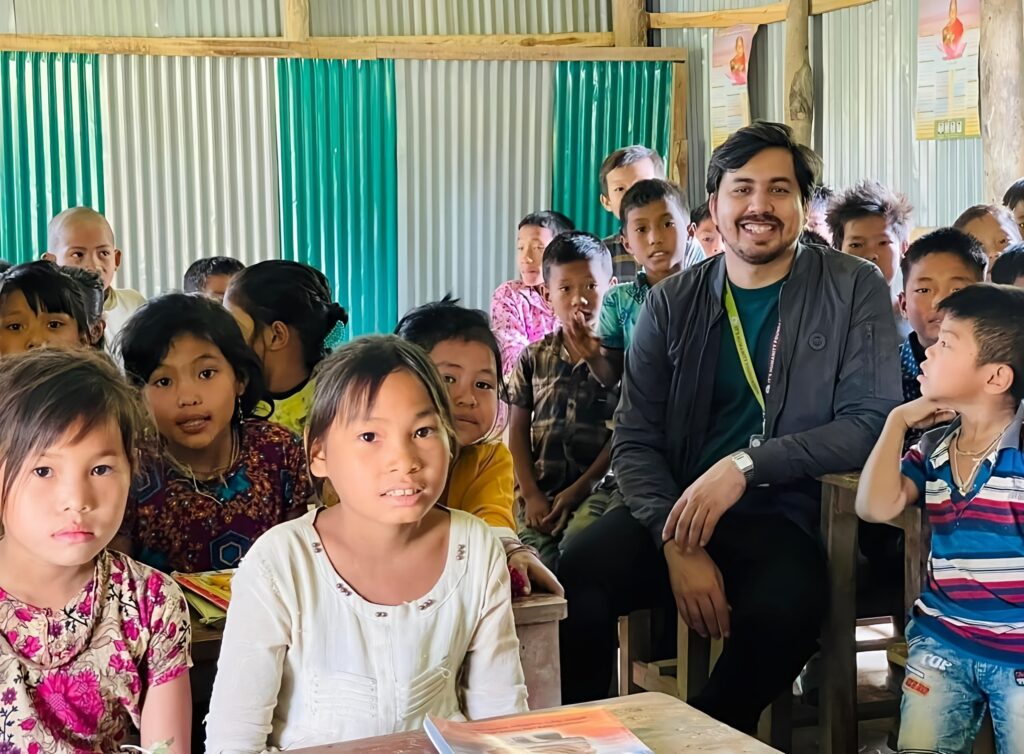
10. Given the ongoing challenges in supporting marginalized children in Bangladesh, what are the next steps for IHF? How do you plan to continue advancing your mission and making a difference in the long run?
I am someone who firmly believes in hope and harbors ambitious dreams for the future of It’s Humanity Foundation (IHF). When I envision what lies ahead, I see a promising path unfolding. We have recently launched a vocational training program, and my goal is to expand our initiatives to all 64 districts of Bangladesh. Currently, we are active in seven areas, but I aspire to reach the most remote and vulnerable children across the entire country.
We all know how climate change affects women and adolescent girls disproportionately than men. During the recent floods, I noticed an urgent need for assistance with menstrual hygiene among women and adolescent girls. In response to this critical issue, we are planning to launch the Amar Bag initiative. This initiative aims to empower women and adolescent girls in flood-affected areas by providing essential support through the distribution of specially designed dignity bags. Each Amar Bag will contain vital hygiene and health items, such as sanitary products and soap, to address the pressing needs that arise during disasters.
In the long term, I dream of establishing an IHF university. This institution would create opportunities for countless children, particularly those from underprivileged backgrounds. My heart is committed to serving the children of Bangladesh, and I aim to leave a lasting impact on the education system. If given the opportunity, I would love to help transform education in this country because I truly believe there is so much, we can do to create a brighter future for everyone.
